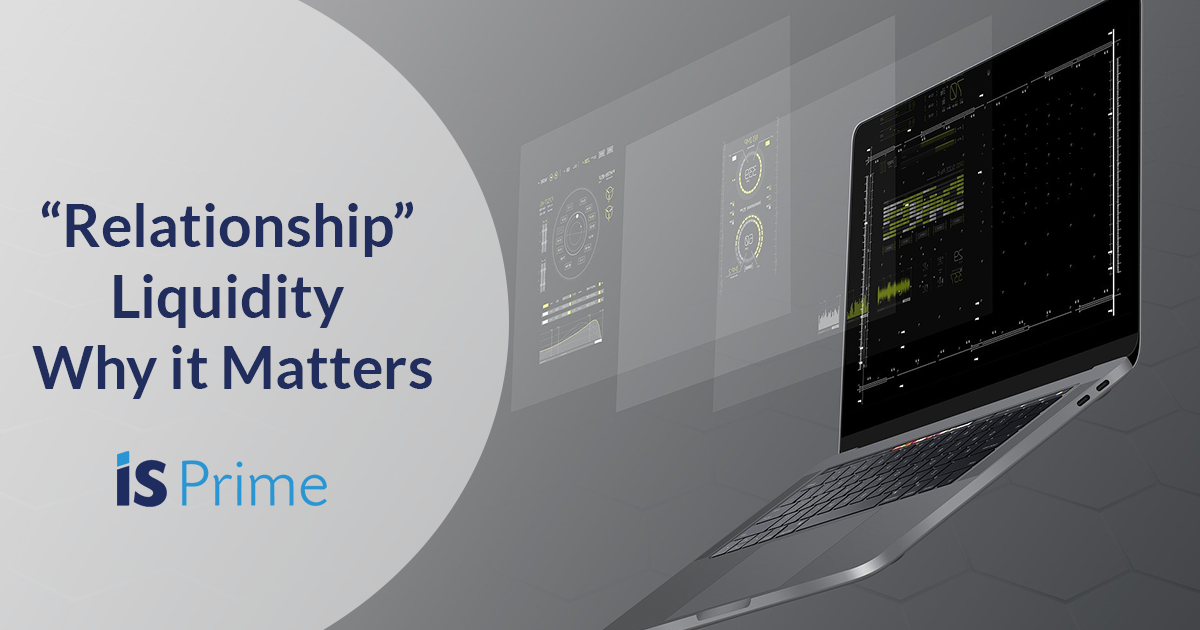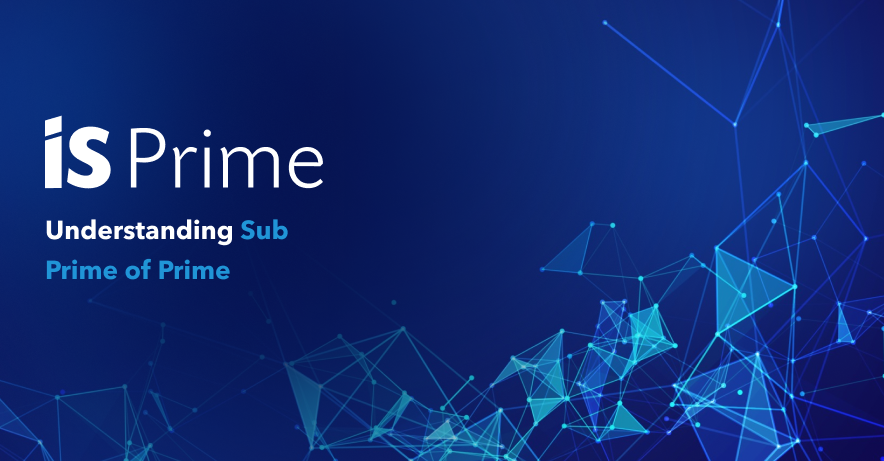“Relationship” Liquidity – Why it Matters

Recently, there have been some new offerings coming on to the market offering retail brokers direct access to liquidity. The implication is that by accessing the primary market “directly”, the broker will get better trading terms.
This is actually not the case, and it shows a fundamental lack of understanding on the part of the technology companies who are providing the offering, and even more surprisingly, the “Prime of Primes” who are “clearing"it.

I’ve been having a number of conversations with clients on the subject of liquidity aggregation, comparing and contrasting the generic liquidity that aggregators and ECNs typically offer, versus the relationship-based liquidity that IS Prime provides.
I’ve noticed that there seems to be a general misconception in the market that liquidity is commoditised – that it is all the same and all you need is a price and an ability to execute. The rationale is essentially “If I have pricing from UBS, then it will be the same pricing that UBS show elsewhere”. But nothing could be further from the truth.
However, because this misunderstanding is so widespread, it’s worth exploring in a little more depth.
What is relationship liquidity?
First, a quick recap of some basics.
As we know, in the spot FX market, the major players and primary sources of liquidity are the banks, the non-bank liquidity providers and the exchanges. Then there is a selection of resellers, or aggregators, of that liquidity, i.e. the Prime of Primes (PoPs), Agency Brokers, and the ECNs – who you can trade with depends on your technology, setup and credit relationships. The key difference between a proper value add Prime of Prime versus an ECN, or a simple credit intermediation service, is the fact that they are providing relationship based liquidity.
ECNs and PoPs largely provide anonymous liquidity, which means that the end user (or the next user in the chain) doesn’t know who the ultimate provider of that liquidity is. And the liquidity provider (LP) doesn't know who the end consumer is, either.
If you’re a retail broker, the combination of how your counterparty's liquidity pool is created, who its LPs are, and how it interacts with those LPs, is the most essential - and often the most overlooked - factor when sourcing liquidity and choosing a Prime of Prime.
The reason is down to the relationships that your PoP has built and cultivated with its LPs, and how it manages flow towards them. If your PoP gets this right then it becomes the true differentiating factor.
Why is this?
There are many reasons why a market maker will show a better price to one provider than another (trust, quantity of volume, quality of dialogue etc), but in the context of relationship versus anonymous liquidity, it is largely down to the virtuous circle that is created by the concept of skew. Skew is when the LP moves one side of their price closer to the market mid point to encourage flow on the side of the spread that the LP would like to trade on, based upon the risk inventory that they’re holding.
This is an important point, as we shall see.
LPs and skews
The reason why LPs might show a skew is because if they have a risk position on one side or the other, then the best-case scenario for them is to be able to show a price to a client who is skew-sensitive, so that the client will take them out of that risk.
Put simply, if I am an LP that has just been showing a straight two-way price, and a client buys from me, I want to exit that risk by buying back from the market at a lower price. One way that I can do that is by showing a better bid price than the rest of the market – which I would skew my price to do i.e. tighten my offer. A natural product of aggregation is that if an LP shows a price that is better on one side of the spread, then they're going to be at the top of book for that aggregation, which means that any client seeing that price will be much more likely to trade with them, and therefore take them out of that risk.
In this way, an LP showing a skew will benefit both their client- because it improves their bid/offer spread – and the LP itself because, if it is able to offload its risk more easily when it shows a skew. Through doing this it fulfils its primary function, which is to retain spread.
This becomes a virtuous circle and a situation that benefits everyone. The LP can rapidly get out of its risk, the client offers a better spread, and the end trader gets a better, more executable price.
Skew leakage and alpha hunting
From the LP’s perspective however, although showing skews can clearly be beneficial, there are significant downsides.
LPs make themselves vulnerable every time they show a skew, because effectively they're signalling to the market what their position is. If I'm an LP with a large Euro position for example, and if I skew to everybody, then I'm immediately risking leakage of that information.
There are market participants that, once they are able to identify skew, will immediately act on that, to move the market against the core position that the LP is holding. Various high-frequency shops for example will be constantly ‘alpha hunting’ by scanning pricing and looking at short-term price movements to determine what direction the market is going to move in during the next ten, twenty or fifty milliseconds, or potentially further out. So LPs become understandably nervous because they have private alpha, which they don’t want to make public.
LPs are however becoming much savvier to these activities. To determine whether their skews are being leaked, they will show certain skews at certain times to a particular counterparty or venue, and then look in the public markets to see whether there is a change in the price, indicating that that skew has been leaked.
This is where relationships come into play. The more confident an LP is that their counterparty is carefully controlling where the skewed price is distributed, the more likely the LP is to continue showing its skews to them, the larger those skews will be, and the better liquidity it can then offer to its own customers.
How does this affect you, as a retail broker?
If an LP sees that a counterparty or venue is simply sweeping its liquidity together with other liquidity sources, without any consideration of how its skews are being distributed, then the LP will quickly stop showing its skews to that counterparty.
So if your Prime of Prime, for example, does not carefully manage the relationships with its liquidity providers, its clients’ flow, and the technology it is using to aggregate and distribute liquidity, then this can have a huge impact on your POP’s liquidity because the inbound spreads they receive will widen, as will the corresponding spreads they are able to show to you.
At IS Prime, we understand the importance of utilising technology to carefully curate and manage flow so that LPs are protected from any kind of toxic activity. As a result, we enjoy highly trusted relationships with the group’s LPs, which means that they continue to show us their skews, which in turn benefits our clients and their own end consumers.
Horses for courses?
It’s clear that relationship liquidity offers a number of benefits over anonymised liquidity, principally because it enables brokers to offer not only tighter spreads but also firmer, more consistent quotes, with a greater probability of execution.
Having said that, there are instances where a market participant might want to use generic anonymous liquidity. You might, for example, want a liquidity source that you can send highly toxic flow to, without having to worry about the impact on the ultimate recipient of that risk. Also, if your flow is relatively directional and you're worried about potential information leakage of your own flow, then you may choose to trade through an generic venue. This is where IS Prime excels – our proprietary technology allows us to effectively profile, segment and route flow, ensuring that we deliver high quality of execution whilst maintaining core spreads over the long term.
We are able to work closely with our clients to ensure we are delivering the right liquidity for each and every client, and their underlying strategies.





